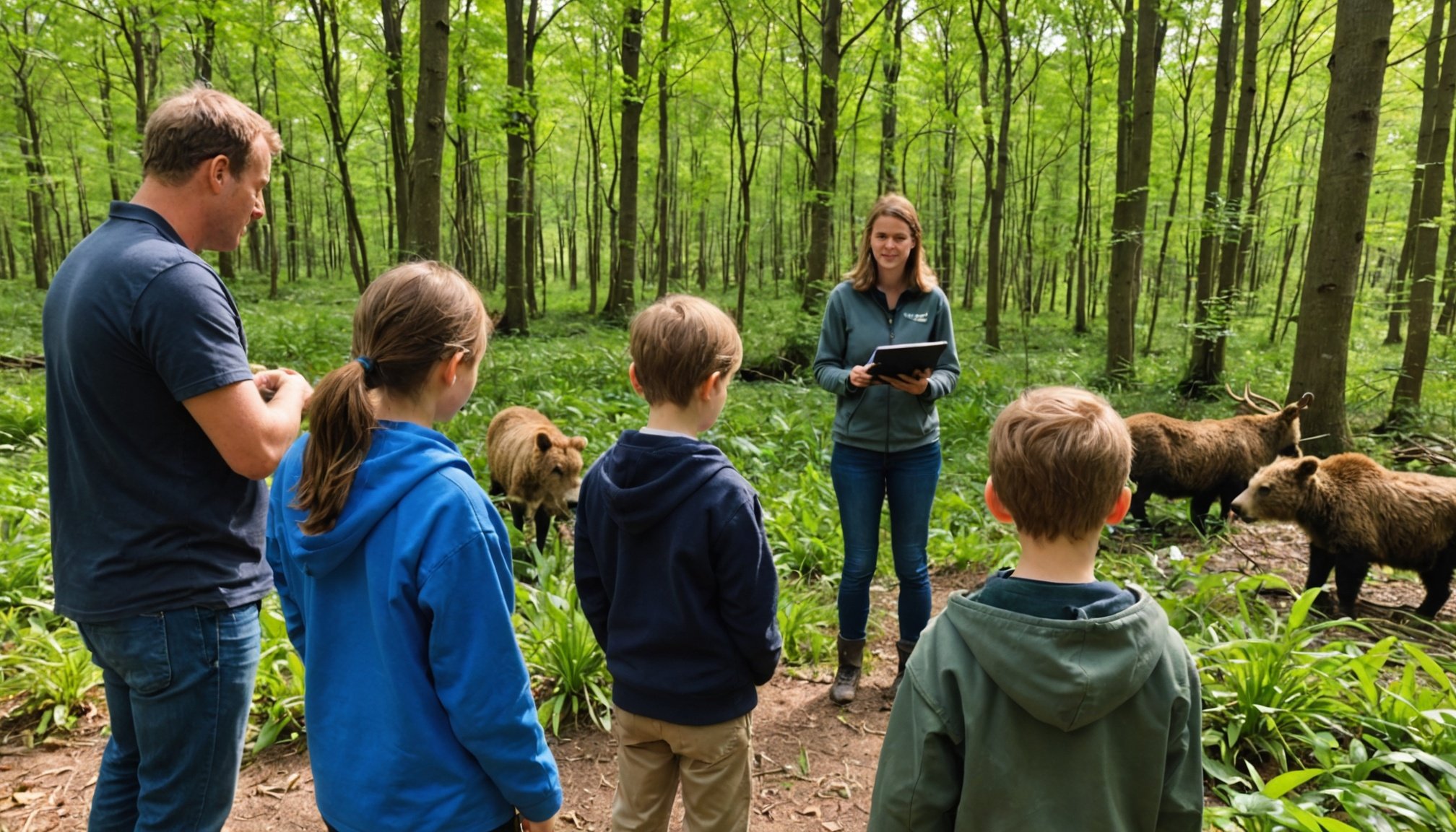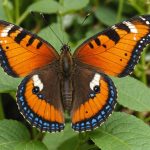Overview of Wildlife Conservation in Education
Wildlife conservation education plays a pivotal role in nurturing the next generation of environmental stewards. It involves teaching students about the preservation and protection of biodiversity, equipping them with the knowledge and skills necessary to address growing ecological challenges. This education extends beyond biology, integrating with social sciences, geography, and economics to provide a well-rounded understanding of environmental issues.
In the UK, universities are increasingly embedding conservation topics within their curriculums. Current trends show more focused modules and hands-on experiences, allowing students to engage directly with conservation projects. UK universities are leading the charge, crafting courses that address both global and local environmental concerns, preparing students for careers in sustainability and ecological research.
Also to read : Reviving the corncrake: a deep dive into uk zoo breeding programs for endangered species conservation
The integration of conservation education into school curriculums underscores the importance of this field in academia. By instilling these values early, schools help build a foundation of awareness and empathy towards the environment. This curriculum integration ensures that all students, regardless of their chosen field, gain an appreciation for and understanding of the significance of conservation. As such, wildlife conservation education is not only about preserving nature but also about integrating this critical knowledge into the fabric of academic study, influencing future societal and environmental policies.
Notable Programs Focused on Wildlife Conservation
In the realm of wildlife research and conservation studies, numerous academic programs stand out for their dedication to nurturing the next generation of conservation experts. These programs do more than provide education; they offer an immersive experience that molds future leaders in the field.
Additional reading : Mastering rare bird sightings in the uk: the ultimate guide with essential tips and best practices
Examples of Leading University Programs
Institutions such as the University of California, Berkeley, and the University of Oxford offer wildlife conservation degrees that integrate fieldwork and academic study. These programs set a robust foundation in wildlife research methodologies, providing students with the tools needed for effective conservation.
Innovative Courses Offered
Courses like “Biodiversity in Crisis” at Yale University and “Marine Wildlife Conservation” at Stanford provide a unique hands-on understanding of pressing environmental issues. These classes encourage students to engage practically, bridging the gap between theory and real-world application.
Interdisciplinary Approach to Conservation Education
A highlight of these programs is their interdisciplinary nature. For instance, Harvard’s conservation curriculum combines ecology with economics and social sciences, fostering a holistic comprehension of conservation challenges. This collaboration across disciplines enriches wildlife research, ensuring diverse perspectives are considered in conservation strategies. This approach not only enhances academic insight but also equips students with a comprehensive view of the ecosystem dynamics essential for successful wildlife conservation.
Partnerships Between Educational Institutions and Conservation Organizations
Collaborative initiatives between educational institutions and conservation organizations have proven transformative both for students and wildlife. Conservation partnerships often aim to align academic goals with tangible environmental outcomes. These partnerships facilitate joint research projects, field experiences, and environmental education programs, enhancing the curriculum while bolstering conservation efforts.
Notable partnerships include collaborations between universities and NGOs that focus on protecting endangered species and habitats. Objectives often include conducting critical research, species monitoring, and community engagement to foster sustainable practices. By working together, these partnerships effectively bridge the gap between intellectual theory and practical application, offering students unique, hands-on learning experiences.
The impact of these collaborations extends to student education and career preparation. Students involved in these partnerships gain valuable skills, from research methodologies to on-ground conservation techniques, providing a competitive edge in their future careers. Moreover, these experiences cultivate a deeper understanding of environmental challenges and solutions.
Examples of successful projects include habitat restoration initiatives and conservation workshops that engage both students and local communities. These projects not only enhance biodiversity protection but also raise awareness about environmental issues and sustainability practices. Consequently, conservation partnerships play an indispensable role in educating future environmental stewards while addressing the pressing needs of wildlife conservation.
Teaching Methodologies in Wildlife Conservation Education
Understanding diverse pedagogical approaches is essential for effective wildlife conservation education. Emphasizing experiential learning ensures students gain invaluable hands-on experience, crucial for grasping complex ecological concepts.
Hands-On Learning and Engagement
Fieldwork and internships play a pivotal role in conservation education. These experiential learning opportunities allow students to actively connect theoretical knowledge to real-world applications. For instance, participating in wildlife surveys or habitat restoration projects can boost engagement and cultivate profound understanding. By engaging in such practical activities, learners are better prepared to address conservation challenges.
Use of Technology in Teaching
Technological innovations provide dynamic educational strategies. For example, virtual reality enables students to explore ecosystems without leaving the classroom, offering a simulated, immersive experience that complements traditional learning. Additionally, interactive apps and data visualisation tools empower learners to analyse environmental data more effectively. Harnessing technology in this way enhances accessibility and comprehension.
Community Involvement and Outreach Programs
Community-based initiatives foster experiential learning and extend educational impact. Outreach programs that involve local communities in conservation efforts can provide practical insights and local knowledge beneficial to the learning process. Such collaboration helps bridge the gap between academic studies and real-world application. By involving the community, educational programs benefit from cultural perspectives, making learning experiences more inclusive and comprehensive.
Outcomes and Impact of Wildlife Conservation Education
The educational outcomes of wildlife conservation education are profound and far-reaching. Schools and programs have adopted varied metrics to assess the effectiveness of these initiatives. For instance, numerous studies highlight enhanced knowledge retention among students, showing that participants in conservation education programs often exhibit a deeper understanding of ecological processes compared to their peers who haven’t undergone similar training. Additionally, there’s notable evidence suggesting behavioural changes, such as increased recycling and conservation efforts at personal levels.
One critical aspect underpinning these outcomes is the student testimonials collected post-programme. Students frequently report a renewed passion for environmental issues, stemming from engaging, hands-on learning experiences. This transformation is not limited to self-reports; educators also observe heightened enthusiasm and participation in classroom discussions related to conservation topics. Such testimonials underscore the emotional and intellectual impacts of direct engagement with wildlife and nature.
The long-term environmental impact of widespread conservation education cannot be underestimated. As awareness grows, it fosters a culture of sustainability and responsibility towards the planet. In regions where such education is embedded within school curricula, noticeable improvements in local biodiversity and reduced pollution levels have been documented. These changes serve as a testament to the power of informed young minds to effect tangible environmental change.
Challenges and Future Directions
In the United Kingdom, wildlife conservation education faces notable challenges. Predominantly, these challenges stem from insufficient funding and resources, which limit the capacity to implement comprehensive programs. Additionally, there is a lack of trained educators fluent in both ecological concepts and effective teaching methodologies. This gap hinders the quality and impact of conservation education.
Beyond these challenges in education, there are emerging trends and innovative practices reshaping the landscape. The integration of technology, such as virtual reality and interactive apps, enhances engagement and accessibility for learners. These tools provide immersive experiences, allowing students to explore ecosystems and wildlife habitats from the classroom. Furthermore, community-based projects and citizen science initiatives empower students by connecting them directly with local conservation efforts, fostering a sense of responsibility and active participation.
Looking ahead, the sustainability of these programs requires embedding wildlife conservation into mainstream educational frameworks. Collaborations between educational institutions, conservation groups, and governmental bodies could promote a cohesive approach. By updating curriculums to include environmental literacy and offering interdisciplinary courses, future generations will be better prepared to address ecological challenges. Ultimately, these future trends highlight an optimistic path towards more sustainable education solutions that nurture eco-conscious citizens.









